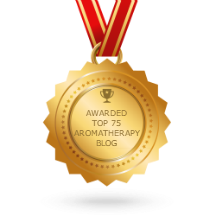In Northern
Australia, plantations of the Northern Territory are known for growing Northern A member of their southern
conifer family, Cupressaceae, the Australian Cypress Pine is a large tree with
highly fragrant wood. Through steam
distillation of the wood, bark and leaves of these large trees comes an oil
that is described by Mark Webb as “rich, resinous, woody, smoky, honey-like and
grounding.” (1)
Australian Cypress Pine - Callitris
intratropica.
The composition of
the Australian Cypress tree is different from other Australian essential oils,
according to Webb. He explains that when
combined with the naturally-occurring resinous compounds of the bark and
cambium, an amount of guaiazulene can be obtained. The guaiazulene content provides the clear,
deep cobalt blue color of the oil. This
oil is known as Australian Blue Cypress Oil.
Predominately sesquiterpenoid based as well as containing the
guaiazulene, its major constituent is guaiol (20-30%). Additional constituents are guaienes,
selinenes, eudesmols, beta-elemene as well as furanones. With this combination, it has uses in healing
wounds, as an anti-inflammatory and an antibacterial. (1)
When the heartwood
is distilled on its own, a clear, colorless essential oil is collected, with
the same physical and chemical properties as Australian Blue Cypress Oil. Cypressence Clear, as it is known, has the
same therapeutic properties, though containing less guaiazulene. A small amount of clear, colorless oil can be
distilled from from the resin rich bark and cambium layer. The leaves offer a turpentine-like oil with
l-lilmonene as its main constituent and of little interest to the aromatic
community. (1)
 |
| Photo courtesy of Plant Extracts, Inc. |
The Cypressence
Clear oil has a softer note than the Australian Blue Cypress, and though both
oils are great fixatives in blends, potpourri and perfumery, the Australian
Blue Cypress is actually registered for such.
Webb notes that he finds it useful in grounding those that are flighty,
nervous or distraught, as he finds it calming.
(1)
Robert Tisserand
indicates that this oil is contraindication in all routes to pregnant and
lactating women due to the potential for fetotoxicity. He also indicates it should be used
cautiously in conjunction with low blood pressure or in combination with drugs
that are metabolized by CYP2D6.) As
well, there is a potential for mild skin irritation above 74%. (2)
(1)Mark
Webb. Bush Sense, Australian Essential Oils and Aromatic
Compounds, Adelaide, Australia: Griffin Press, 2000.
(2) Robert Tisserand/Rodney Young. Second Edition, Essential Oil Safety: Churchill Livingstone, 2013.
My notes: I have seen this oil recommended for use in wound healing, and an antibacterial and an anti-inflammatory. Our primary use for it? as a wasp repellant. The wasps here in TN seem to hate it. We have applied it to areas where wasps want to build their nests, with great success. It is said to relieve the pain of Wasp stings almost immediately.
You may read more about, and purchase your own Blue Cypress Oil here.



No comments:
Post a Comment